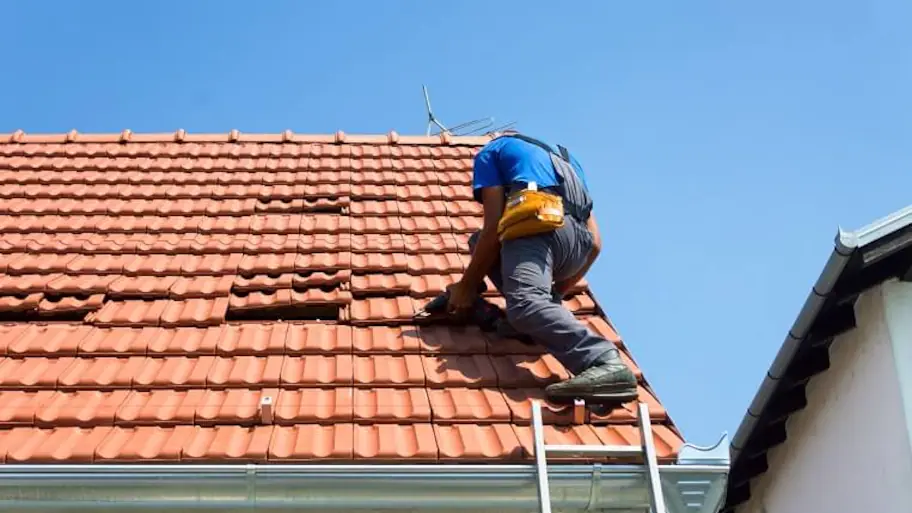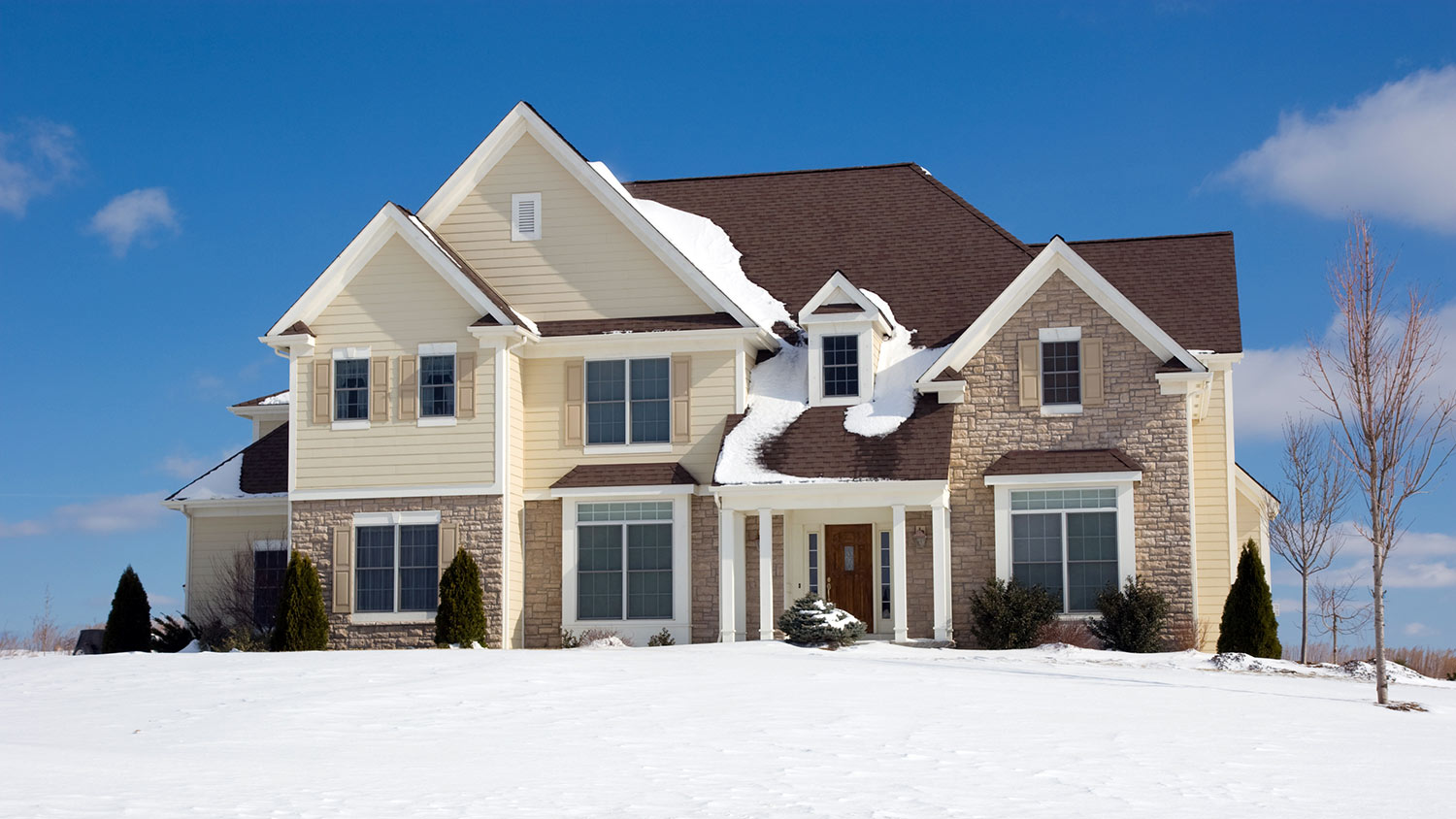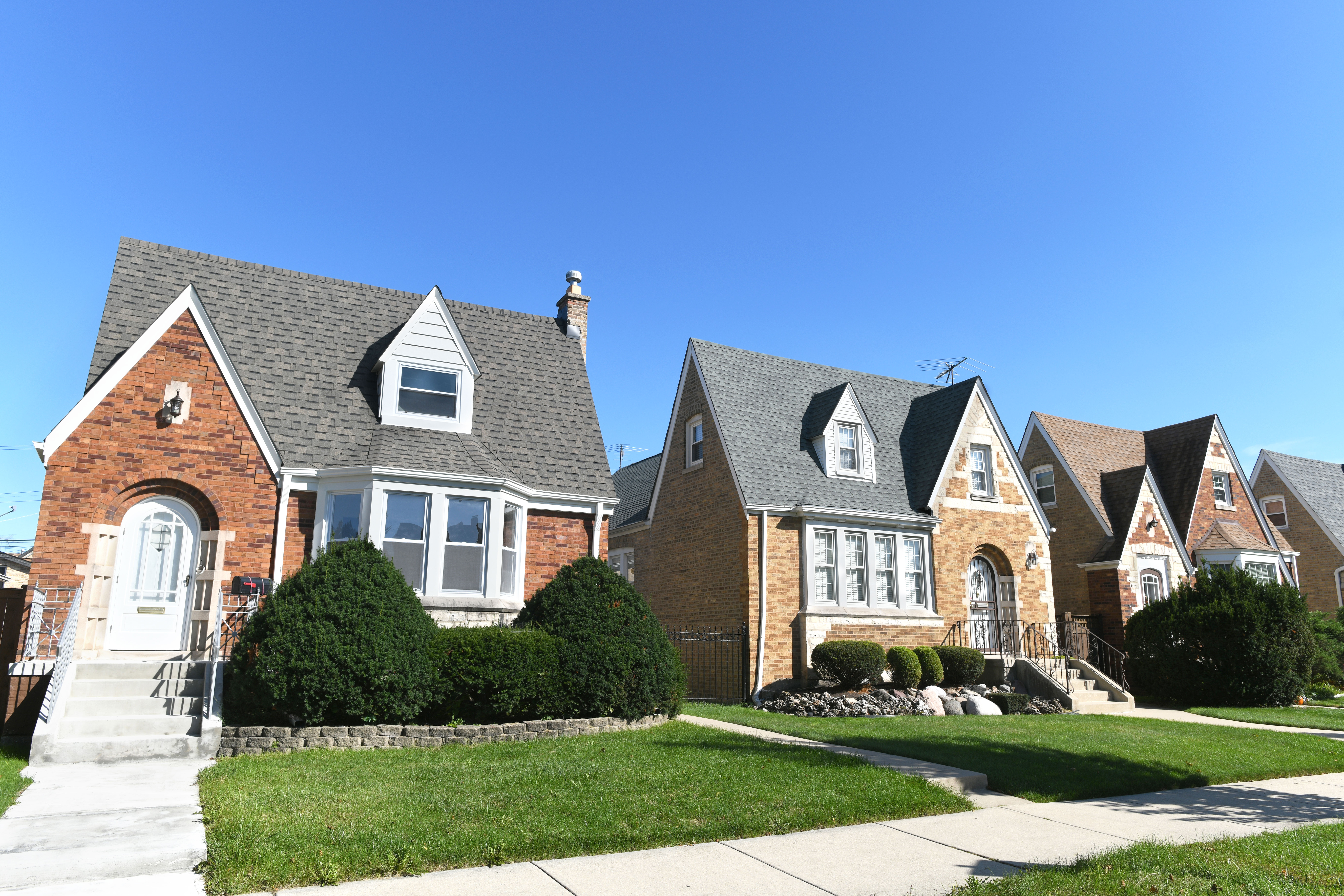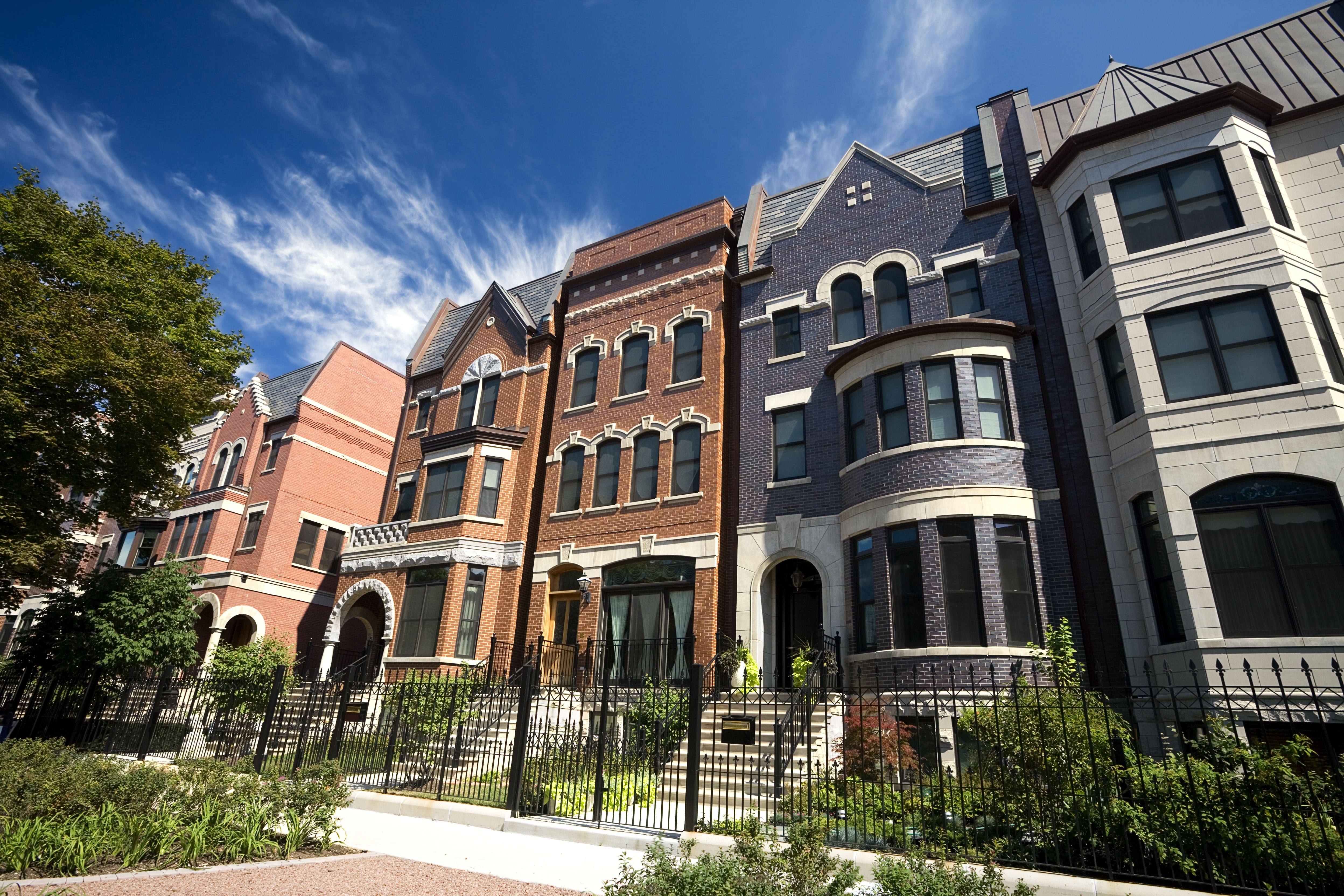
Chicago’s extreme weather takes a toll on local roofs. Learn how much roof repair costs in Chicago and what contributes to the total price.
Don’t get iced out with the wrong roofing material


While you’re staying warm and cozy inside by the fire on a snowy day, your roof is working overtime to keep your home protected from the elements. Homeowners in cold climates need to choose roofing materials that can stand up to the ice, snow, and wind that harsh winters can bring.
Learn about six of the most common roofing materials and which ones hold up best in cold, snowy climates.
| Type of Material | Average Material Cost (per sq. ft.) |
|---|---|
| Metal | $5–$25 |
| Slate | $10–$40 |
| Synthetic Slate Shingles | $7–$12 |
| Asphalt Shingles | $4–$25 |
| Clay Tiles | $4–$25 |
| Concrete | $4–$10 |
Metal roofing materials stand up exceptionally well in harsh winter climates. Snow and ice should slide right off a residential metal roof, preventing the formation of ice dams. They also do a great job at resisting damage due to windstorms, thanks to the increased durability of most metals. And it's worth mentioning that they can last up to 60 years.
Metal roof repair costs an average of $1 to $5 per square foot, but for widespread or serious damage or if your roof is more than 50 years old, it may be better to replace the roof entirely. Metal shake is often easier to repair than other styles of metal roof that’s installed in larger sheets, so consult a metal roof repair pro to find out if you should repair or replace your metal shake roof.
Be sure to install a snow guard if you opt for a metal roof to prevent ice from pooling on walkways beneath it. Rust is also a common problem with metal roofs, depending on the materials used during construction. Also, metal roofs require additional insulation for colder-than-average climates. Otherwise, your home's heating system will work harder, and you'll find an unpleasant surprise when you open your utility bill. Silver lining—the reverse is true in the summer when metal roofs keep your home cool.
| Pros | Cons |
|---|---|
| Highly wind-resistant | Prone to rust |
| Prevents ice dams | Require additional insulation |
| Long life span | May cause ice formation on the ground |
Best for: Homes in areas that regularly experience high winds
Slate is an excellent roofing material for winter. Slate roofs offer superior insulation, are strong enough to withstand blizzard-like conditions, and offer decent durability. Slate tiles excel on sloped roofs, making them a popular option in states like Colorado and Minnesota that get plenty of snow.
Many homes simply can’t handle the extra weight of a slate roof without extensive retrofitting, which drives the material’s already high price upward. Also, slate will last an impressive 50 to 100 years. However, individual pieces of the stone are fragile and prone to breaking underfoot if you ever need to address a problem on your roof. Broken slate roofing tiles are expensive to repair.
| Pros | Cons |
|---|---|
| Ideal for sloped roofs | Roof structure may need added support |
| Provide added insulation | Expensive |
| Great in high winds and heavy snow | Prone to breaking |
Best for: Homes in areas that are not prone to high winds that may cause impact damage
Synthetic slate shingles are an up-and-coming roofing option that offers all of the advantages of traditional slate tiles with some added bonuses. Just like real slate, synthetic slate handles extreme temperatures in either direction and is strong enough to withstand windstorms and blizzards. Synthetic slate is more durable than actual slate and offers similar aesthetics. This roofing material is energy efficient.
Synthetic slate roofing in its current form is a relatively new building material; therefore, some mystery remains about its long-term performance. However, manufacturers express confidence by providing up to 50-year warranties on the product.
Although some types imitate natural stone quite well, synthetic slate isn’t real, and some styles on the market have an artificial appearance. Take time while shopping around to balance appearance qualities against price. Keep in mind that this unique material is not always readily available in most locations.
| Pros | Cons |
|---|---|
| Budget-friendly | May look artificial |
| More durable than slate | Can be challenging to source |
| Energy-efficient | Unproven long-term performance |
Best for: Homeowners who like the look of slate roofing but want a lower cost or more protection from impact damage

Asphalt is light and comes in a near-universal 3-tab design, which has a lower-end wind rating of 60 mph. A dimensional asphalt shingle costs a bit more but has a wind rating of between 110 and 130 mph. One bonus—these types of shingles tend to be more aesthetically appealing. One downside to asphalt shingles is that they wear out over time and often require frequent repairs. Additionally, asphalt may not do well with heavy winds from a blizzard, as the shingles could blow off the roof (though many shingles come with warranties).
“Shingles are not waterproof and are prone to ice dams. Ice dams trap moisture and force water to run uphill, which it was not meant to do,” says Ami Feller, Expert Review Board Member and owner of Roofer Chicks in New Braunfels, TX. “When using shingles in cold climates, it is code to install ice and water shields along the eaves and in the valleys, where ice dams are most prone to form. This lowers the risk of water penetrating the structure.
| Pros | Cons |
|---|---|
| Cost-effective | Require frequent repairs |
| Classic aesthetics | Prone to wind damage |
| Easy to install | Do not prevent ice dams |
Best for: Budget-conscious homeowners in areas without frequent high winds
Clay is an excellent insulator and can stand up to snow and ice. However, the material is relatively fragile and may not do well with extreme wind or an intense hailstorm. Still, clay is an attractive choice for those going for a classic Spanish or Mediterranean architectural style.
Clay is another roofing material that is heavy enough that some homes may require retrofitting to handle the additional weight of the material. Installation can be tricky, especially on roofs with numerous angles and valleys to protect, so you’ll want to hire a local roofer with experience with clay roofs. Although clay roofs are durable, if repair becomes necessary, walking on them without extra care can damage individual tiles.
| Pros | Cons |
|---|---|
| Cost-effective | May break in extreme wind or hail |
| Excellent insulator | Requires additional structural support |
| Durable | Difficult to install |
Best for: Homes in climates that don’t get frequent hail or high winds
Concrete roofing tiles are not the best choice for areas that experience rapid freeze-thaw cycles and extreme winters, especially in higher elevations. However, you can ask a local pro about specialized concrete roofing products that are purpose-built for cold climate use.
Concrete tiles are heavy, and they have a high water absorption rate of around 13%. Ice and snow absorb into these heavy tiles and put added pressure onto the structure of your roof. The end result? Cracked roofing tiles and structural damage.
| Pros | Cons |
|---|---|
| Budget-friendly | High water absorption rate |
| Long life span in ideal conditions | Can crack |
| Good thermal insulator | Adds weight to roof |
Best for: Homes in areas without extreme winter conditions or rapid temperature fluctuations
Metal roof repairs are most commonly needed due to water leaks. Some places where leaks can happen include chimneys, skylights, seams, and vents. The good news is that metal roofing is known for its long lifespan, and regular repairs can help extend it.
The second most popular request is asking a pro for recommendations. Scheduling a professional to conduct a roof inspection once a year can help identify problems before they worsen.
Determining the best roof for your cold-climate house boils down to a few competing factors—performance and price. Overall, metal roofing is arguably the best overall choice when taking both factors into consideration. It’s lightweight, cost-effective, and sheds snow and ice quickly, preventing ice dams that can damage your home and icicle formation that can endanger passers-by.
A metal roof is a great choice if you live in an area with a lot of winter weather. Metal roofing stands up particularly well against heavy snowfall, hail, ice, and strong winds.
Slate roofs may perform very well over the long term, but their high price tag and need for additional structural support can put them out of budget for many homeowners. If cost savings is your primary deciding factor, asphalt shingles offer solid performance at an affordable price, as long as you can keep up with maintenance.
From average costs to expert advice, get all the answers you need to get your job done.

Chicago’s extreme weather takes a toll on local roofs. Learn how much roof repair costs in Chicago and what contributes to the total price.

The cost of a new roof in Chicago depends on the roof’s size, material, complexity, and more. Learn how much roof replacement costs in Chicago.

Metal roofs provide an effective defense against Chicago’s high winds and heavy snowfall. Learn how much a metal roof costs in Chicago and what affects the total cost.

Hiring a reputable roofing company is the key to a safe and long-lasting roof. Here are the top questions to ask a roofer before hiring the best professional.

A leaky roof is less than ideal. Learn how to patch a roof while you wait for repairs from the pros to prevent further damage to your home.

Sharpen your skills and smooth your cuts with this DIY guide to cutting metal roofing. We cover everything from measurements and safety gear to which tools will give you the cleanest cut.